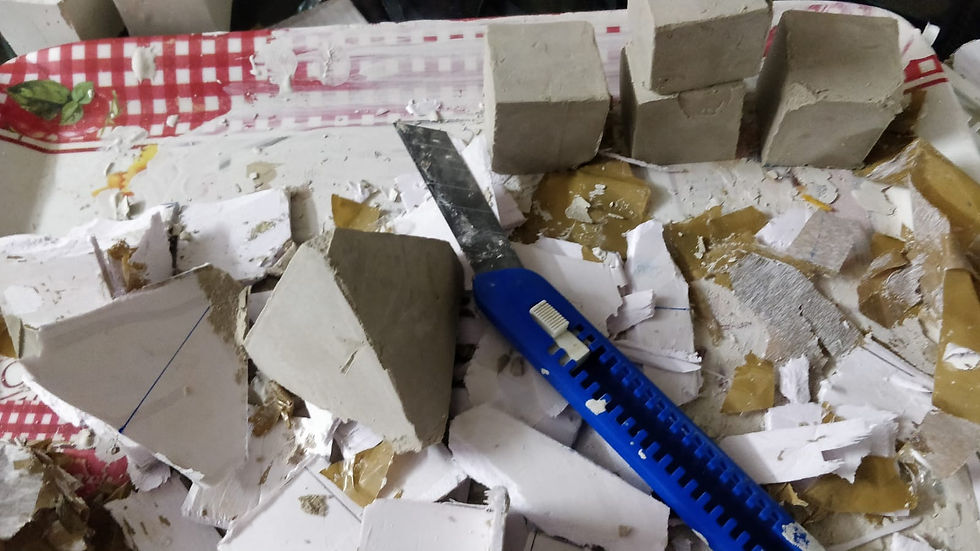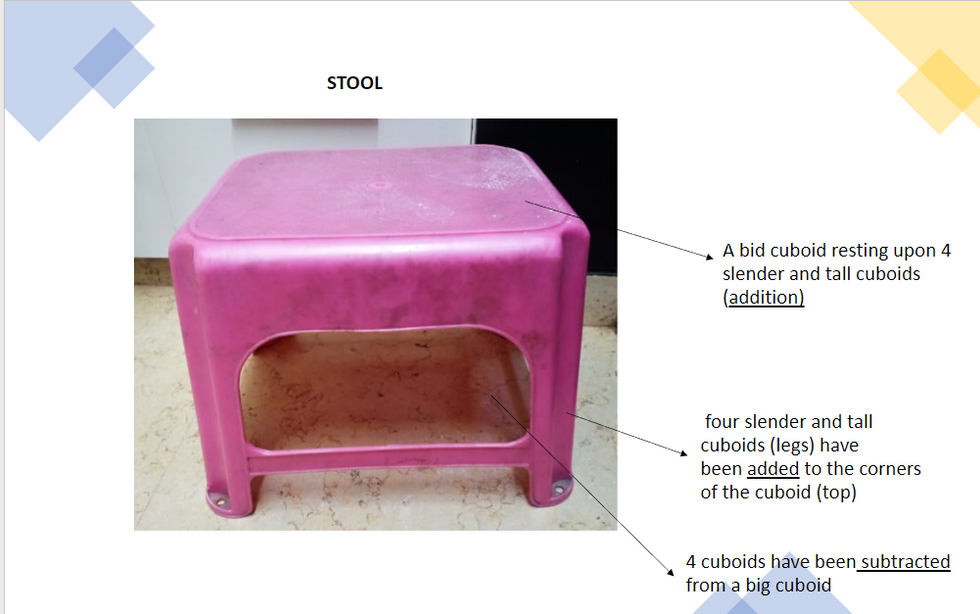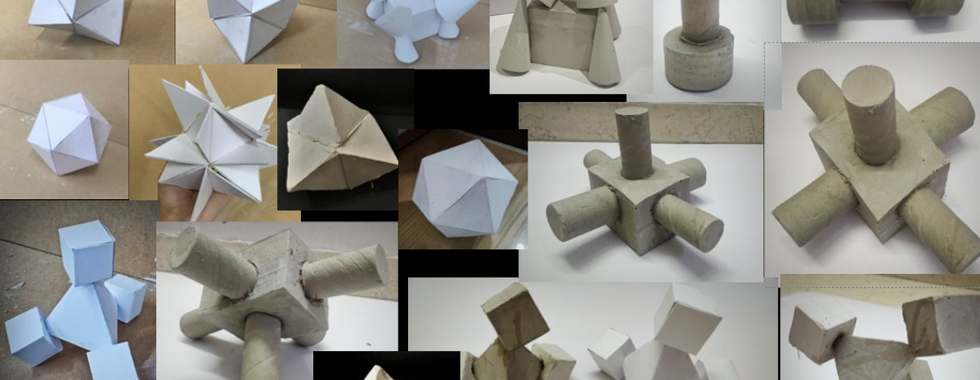LJL- Form to Formation
- Parri Ahuja
- Oct 31, 2021
- 2 min read
Updated: Mar 23, 2022
“Look at usual things with unusual eyes.” –Vico Magistretti

INTRODUCTION-
We learnt addition, subtraction, integration, carving etc. using various simple 3d forms and created unique outcomes using sun board, ivory sheet, OHP paper and plaster of Paris.
Understanding form & shape-
-3 examples taken from my own surroundings:
Additions and Subtractions that I tried-
A learning from another project-
-While adding and subtracting various shapes and forms, I connected with the learning of think lab activity- altering perception, as there also we added various shapes to form something different, we also did geometric formation wherein we divided a single shape into many.
-Also while making platonic and Archimedes form I connected with the learning of M2M wherein we learnt how to give half cuts and transform a paper into a form.

PLASTER OF PARIS-
-Do's and Don'ts of working with Plaster of Paris-
DO'S | DONT'S |
Always take the ratio of POP and water as 2:1 | Do not add too much water in the POP as it wont ever get dried.  |
Always measure the quantity of water and POP before mixing them together. | Don't let your POP mixture get dry, as POP gets hard really quickly.  |
Always add water first then mix POP in it | Do not add water in POP. |
Carve the POP when its wet, it becomes easier to do carving when its half wet

| Don't stick POP using elfy or bond as it wont stick for long.  |
Keep on mixing the POP and water mixture until you add it into your mold as it can settle down or make lumps. | |
Wear gloves if you have long nails to avoid the mess | |
Apply Vaseline or any other cream on your hands after working with POP as they get very dry and rough.  | |
CONCLUSION-
STRUGGLES-
I struggled the most while making the POP mixture as I was not able to get the accurate consistency, the POP was getting too watery and sometimes lumpy.
I wasted around 6-7 kg POP while figuring out the accurate consistency. I also had to remake my molds after I had poured the watery POP in them
Then I followed these steps and got the accurate consistency-
Added POP in water and not water in POP.
Measured the amount of POP and water in the ratio 2:1
Kept stirring the mixture with my hand so that it doesn't settle.
Made the POP together for the entire mold and poured it all together.
Waited for it to get dry properly before demoulding it.
FUTURE INQUIRY-
Though I found working with POP very irritating as it was very messy, was taking forever to dry and it was all over me and my room, actually not only in my room but the whole house.
But besides all the cons I found it a very interesting medium to work with, and after creating my final POP model I felt really proud of myself as it turned out to be exactly how I wanted it to be, and also my dad put it up in our drawing as a showpiece and it was a very proud feeling, this has encouraged me too explore further and make more such forms using POP.
“To learn something new, you need to try new things and not be afraid to be wrong.”
― Roy T. Bennett



























Comments